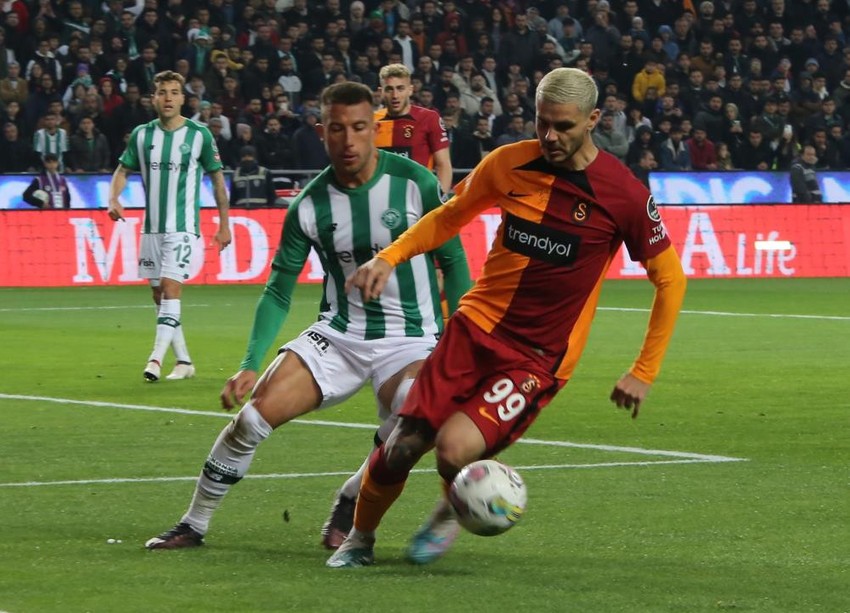Decoding The F1 Drivers' Press Conference: A Guide

Table of Contents
Understanding the Context: Before the Press Conference
Before even a single question is asked, the F1 Drivers' Press Conference is already brimming with subtext. The drivers' responses are heavily influenced by the events leading up to the presser. Analyzing the pre-conference context is crucial to interpreting their statements accurately.
-
Review the race weekend results (practice, qualifying): A dominant performance in qualifying will likely lead to a more confident and relaxed driver in the press conference. Conversely, a disappointing qualifying session might result in more guarded or defensive answers. Look for clues in their answers about car setup and performance issues.
-
Analyze the team's current championship standing: The championship battle significantly impacts the tone and strategy of a driver's responses. A driver leading the championship might be more cautious, while one trailing might be more aggressive in their comments.
-
Consider any recent controversies or news affecting the drivers or teams: Recent incidents, on-track battles, or off-track controversies will inevitably influence the drivers' responses. Be aware of any pre-existing tensions or rivalries that might surface during the questioning.
-
Research each driver's personality and communication style: Each driver has a unique personality and communication style. Some are naturally open and expressive, while others are more reserved and calculated in their answers. Understanding their individual approach helps interpret their responses more effectively. Knowing a driver's history with the press will also aid in interpreting their answers.
Deciphering the Drivers' Language: During the Press Conference
The language used by F1 drivers during press conferences is often carefully chosen to convey information while simultaneously protecting sensitive team strategies and managing their public image. Learning to recognize these nuances is key.
-
Identifying subtle hints about car performance: Phrases like "The car felt good, but we still have some work to do" can hint at underlying issues without revealing critical information to competitors. Pay close attention to qualifiers and subtle word choices.
-
Recognizing coded language used to avoid revealing sensitive team strategies: Drivers are trained to avoid divulging crucial strategic details. Look for vague responses or diplomatic phrasing when questions touch upon sensitive topics like tire strategy or fuel management.
-
Spotting attempts at deflection or diplomacy when answering difficult questions: Experienced drivers are skilled at deflecting tough questions or answering diplomatically without offering concrete information. Observe their body language and tone – a hesitant pause or a change in demeanor might signal discomfort.
-
Understanding body language and tone of voice as additional communication channels: Nonverbal cues can be just as important as the spoken words. Observe their facial expressions, posture, and hand gestures for additional insights into their true feelings and intentions. A shift in tone can also be a subtle indicator of discomfort or deception.
Recognizing the Media's Role: The Questioners
The media plays a pivotal role in shaping the F1 Drivers' Press Conference. The type of questions asked and the way they're phrased directly influence the drivers' responses and the overall narrative of the event.
-
Different types of journalists (specialist, generalist, etc) and their approaches: Specialist motorsport journalists often ask more technically informed questions, while generalist reporters might focus on broader aspects of the race or the driver's personality. Understanding the journalist's background shapes the context of the question.
-
How specific questions can reveal underlying tensions or rivalries: Targeted questions can expose underlying tensions between drivers or teams. Observe how drivers respond to questions about their rivals and look for signs of tension or defensiveness.
-
The impact of pre-existing narratives or media bias on the coverage: Pre-existing narratives and media bias can significantly influence the framing of the press conference. Be aware of potential biases and consider multiple perspectives when evaluating the information presented.
-
Identifying the strategic use of specific questions by certain journalists: Some journalists might employ strategic questioning to provoke a reaction or reveal information from the drivers. Recognizing these tactics enhances your understanding of the dynamics at play.
Analyzing the Post-Conference Aftermath: Beyond the Q&A
The impact of the F1 Drivers' Press Conference extends far beyond the Q&A itself. Analyzing the post-conference discussions and their impact is critical for a complete understanding.
-
Analyzing post-conference media coverage and commentary: Compare different news outlets and social media platforms to identify diverse interpretations of the press conference. Look for consensus and dissenting opinions.
-
Identifying trending topics and social media discussions generated by the press conference: Social media platforms often provide a real-time reflection of public opinion. Monitor trending hashtags and discussions to gauge the immediate impact of the drivers' statements.
-
Understanding how the press conference shapes the public perception of drivers and teams: The press conference significantly influences public perception. Analyzing how the media frames the event helps understand how the public might view the drivers and teams.
-
Predicting potential future consequences based on the statements made: Sometimes, seemingly innocuous comments can have far-reaching consequences. Analyze the statements made for potential future implications.
Conclusion
Successfully navigating the complexities of an F1 Drivers' Press Conference requires understanding the context, decoding the drivers' language, recognizing the media's role, and analyzing the post-conference aftermath. By using this guide, you'll develop a deeper appreciation for the strategic communication happening during these events and significantly enhance your understanding of the sport. Mastering the art of interpreting these F1 Drivers' Press Conferences will significantly enrich your overall F1 experience. So, dive deeper into the world of Formula 1 and start decoding those F1 Drivers' Press Conferences!

Featured Posts
-
 Avenir Des Locaux Rtbf Au Palais Des Congres De Liege Renovation Ou Demolition
May 26, 2025
Avenir Des Locaux Rtbf Au Palais Des Congres De Liege Renovation Ou Demolition
May 26, 2025 -
 Pogacars Dominant Tour Of Flanders Victory
May 26, 2025
Pogacars Dominant Tour Of Flanders Victory
May 26, 2025 -
 Celebrating Black Culture Protest And Pride In Dc
May 26, 2025
Celebrating Black Culture Protest And Pride In Dc
May 26, 2025 -
 Atletico Madrid 3 Maclik Kayip Serisi Son Buldu
May 26, 2025
Atletico Madrid 3 Maclik Kayip Serisi Son Buldu
May 26, 2025 -
 Renewed Pushback Car Dealers Against Mandatory Electric Vehicle Sales
May 26, 2025
Renewed Pushback Car Dealers Against Mandatory Electric Vehicle Sales
May 26, 2025
